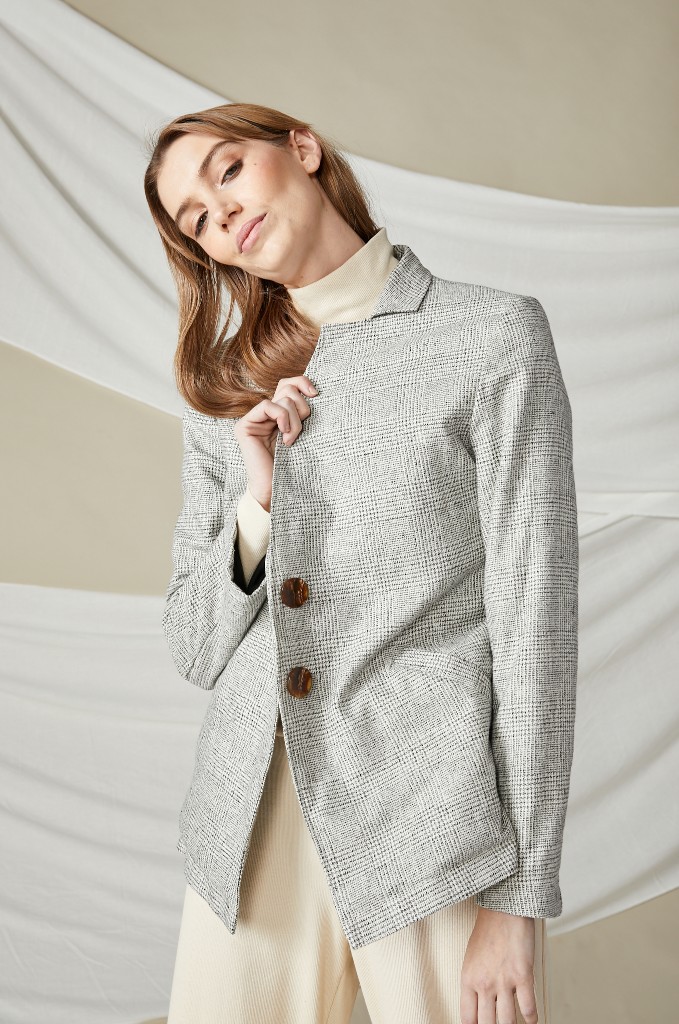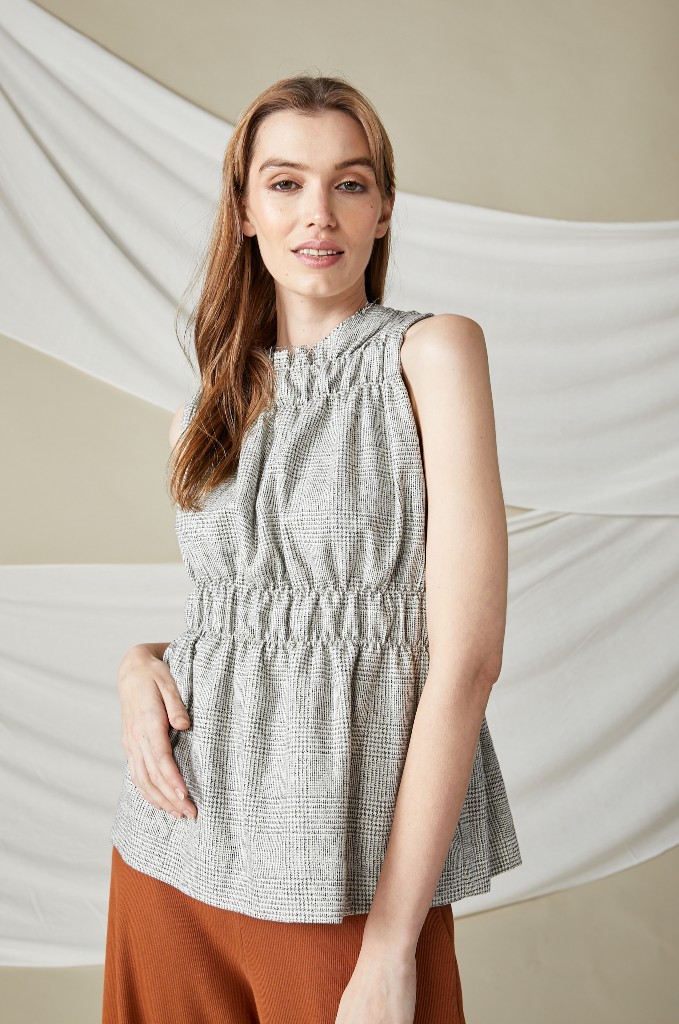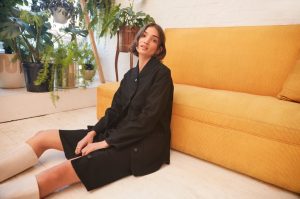Update: Lois Hazel has sadly stopped trading as of late 2022.
Ever wonder what happens to the end-of-roll fabrics used to make the clothes at your favourite stores?
These deadstock fabrics – the 5%-10% excess that brands purchase to fulfill any old production run – can become a product of their own but much of it ends up in landfill, adding to the enormous environmental footprint of the global fashion industry.
For Melbourne-based designer Lois McGruer-Fraser, some of her previous collection’s deadstock fabrics were just enough to inspire a mid-season capsule collection for her label Lois Hazel.
The capsule collection Plaid is made up of the best-selling pieces from the brand’s AW 20 collection, reimagined with a beautiful deadstock grey hemp/cotton blend from a previous AW collection.

Plaid features small batch pieces including a singlet, a scrunch top, slip dress, comfy pants, and a jacket that bridges work-from-home and corporate office attire – the perfect mid-season staple. As per the usual collections, the capsule collection has been ethically manufactured in Melbourne, with manufacturing accredited by Ethical Clothing Australia.
I chatted with Lois about the inspiration for the collection and how things are going over at Lois Hazel HQ.
Q. Britt: What inspired you to create Plaid, the mid-season collection?
A. Lois: I’ve always wanted to be able to do smaller in-season capsule collections out of fabric left over from previous ranges. As the Lois Hazel brand grows, I’m having to meet higher fabric minimums and sometimes my orders won’t end up using the entire meterage, so I am left with an assortment of beautiful fabrics that end up just sitting under my cutting table. This happened with the hemp/organic plaid that I used in the RISE AW19 range. With consideration to all that is going on at the moment, we wanted to give our customers something fresh and exciting. It was also a great way to release limited edition pieces and avoid consistently having to discount stock or do flash sales to keep momentum up between seasons.
Q. How do you go about choosing fabrics for your collections?
A. Fabrics are such a fundamental part of Lois Hazel, as not only do they inspire me and help spark ideas I explore in my collections, they act as an expression of the brand’s core values. The fabrics I use are not selected on solely their aesthetics but also on the basis that they adhere to at least one of more of the following criteria:
- 100% Natural: Fabric that is made up of fibres that come from nature, so that they will easily return back to nature once disposed of.
- Recycled: Fabric that has been repurposed from its original use and turned into a new form, rather than being thrown away.
- Deadstock: Fabric that is leftover or over-ordered from other designers and manufacturers. Using deadstock fabrics diverts these materials from landfill or collecting dust in warehouses by giving them a new life as a garment in your wardrobe.
- Organic: Fabric that is grown organically from non-genetically modified plants and without the use of any synthetic agricultural chemicals such as fertilisers or pesticides.
- Traceable: Fabrics that can be traced right back to its raw form – where it was grown, spun and produced – to ensure its entire supply chain is having a positive impact on both the planet and the people involved.
I have a great network of fabric suppliers here in Melbourne, and they all align with my values and fabric criteria in different ways, so it’s always fantastic being able to drop in and see what they have on offer.

Q. You’ve always been a lover of comfortable/wearable clothing – what inspired your recent collection?
A. I want my pieces to be enjoyed and, for me, being able to enjoy clothing is to be comfortable in it and feel good while wearing it. My most recent collection was strongly inspired by the use of elastics, which flowed back to the desire to create comfortable clothing. I really enjoyed the different textures elastics created when interacting with the fabrics, and through exploring different ways of letting the two components work together. The collection was slowly developed and based around comfort, which was also very fun to brainstorm.
Q. A lot of brands are rethinking the way they release clothing due to the way COVID-19 has shaken up supply chains – has this had any effect on the way you manufacture your collections?
A. It has definitely been a strange few months, however it has been incredibly heart-warming to see all the support for local businesses out there – so much so that my comfort line has nearly sold out and I am doing my first ever in-season re-order, not to mention the Plaid capsule. I wouldn’t say it has had any effect on the way I manufacture my collections, I’m lucky to be able to work so closely with my factories and fabric suppliers, that I am able to easily adapt and keep up with demand where it is needed.
Q. What are your favourite pieces from the recent collection?
A. I’m quite a fan of the Plaid Slip. It falls so beautifully in the hemp/organic cotton and I’m always a sucker for a dress that I can layer up in winter and then slip on some cute slides and head out to the beach when it gets a bit warmer. I’m already thinking up a few cute date night outfits when we can start heading out again.




